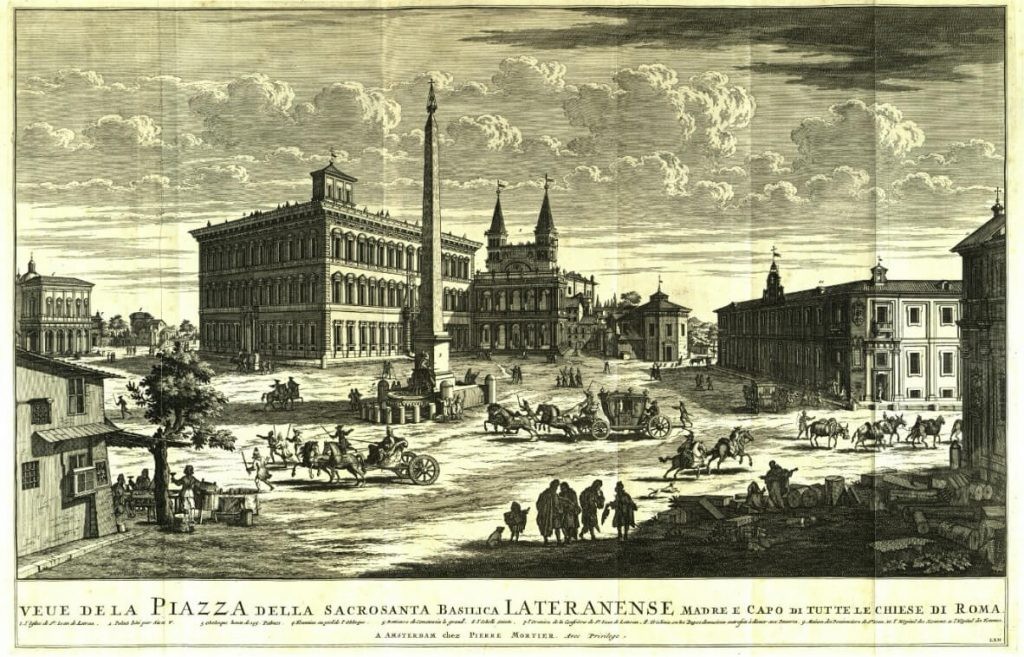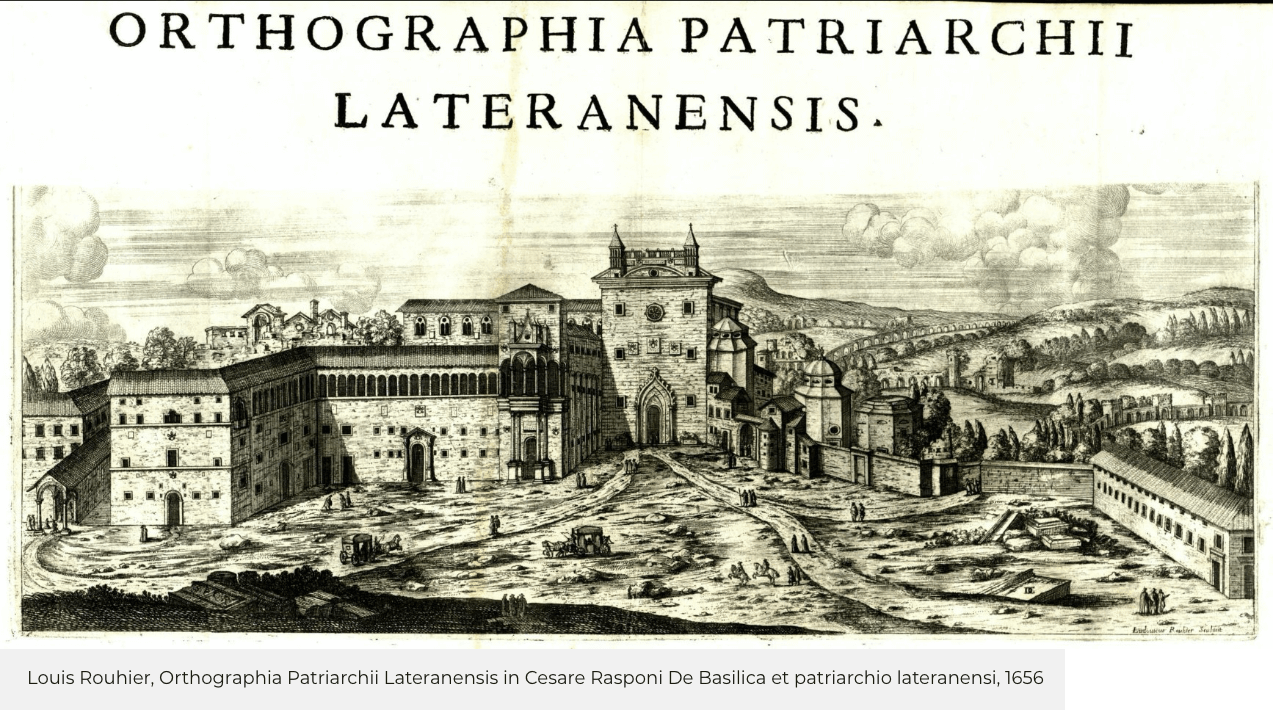To understand what the Patriarchate is, one must surely follow the thread of history back to the decisions made by the Emperor Constantine. Indeed, according to the account of Eusebius of Caesarea, Constantine and his army witnessed a prodigious event in the sky: a cross appeared to them surmounted by the inscription in hoc signo vinces. So it was that Constantine ordered the cross of Christians to be placed as a banner on the Roman imperial standards and, the next day, defeated Maxentius. It was then that, as a sign of gratitude to the God of Christians, he granted them freedom of worship and gave permission to build the first Basilica, as an ex voto for his triumph.
The area dedicated by Constantine to the construction of the Church stood on the Lateran hill, the location of the Domus Faustae, belonging to his wife, and a Severian-era barracks dedicated to the castra nova equitum singularium, the emperor’s military corps which however betrayed him during the aforementioned battle. Immediately the Lateran also became the pontifical see which, throughout history, accommodated the popes for over a thousand years, until the exile to Avignon.
As early as the sixth century, the area referred to as the Lateran, including the bishopric, became the beating heart of the body of the Church. From the eighth century, this area took the name of the Patriarchate, to indicate the complex consisting of a monumental portico probably dating back to the patrician villas here before the erection of the papal residence. Today, if one were to reconstruct what this area comprised, it would include: the basilica, the council chamber, the loggia of blessings, the median gate of the palace, the portico that connected the palace with the Scala Sancta, and the statue of Marcus Aurelius. Completed and inaugurated in the year 324 under Sylvester I, the Patriarchal Palace was for centuries one of the most significant places for Christianity and the nascent curia, hosting a succession of banquets, important ceremonial meetings and myriad events that marked the history of the Church.
With the exile to Avignon, the splendour of the ancient Patriarchate, brought to light by recent excavations, gradually declined, before taking on new life with Pope Sixtus V.



